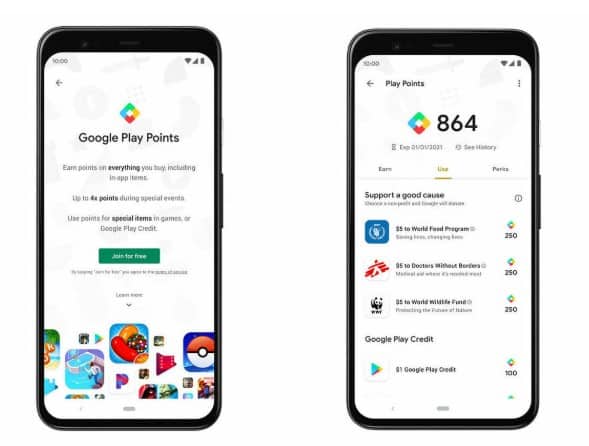
If you’ve ever tried to improve your finances, the first place you’ve probably turned your attention to was your budget. Whether you love it or hate it, there are some benefits to knowing where your money goes on a monthly basis. Budgeting can help you figure out if there are areas where you’re spending on things you don’t really care about. And, it can even help you avoid overdrafts if you’re always staying updated on how much money is leaving your checking account.
But it’s also common to feel discouraged or even annoyed by your budget when it seems that it’s not necessarily helping you save or shave spending. Instead of immediately throwing in the towel, consider these four reasons why your budget hasn’t been as successful as you thought it’d be.
1. Your budget feels too restrictive
Financial experts typically compare the feeling of unsuccessfully budgeting to that of dieting — at first, you feel dedicated (and even excited) to sticking with your plan but you quickly start to feel like your diet leaves you without a lot of your favorite things. Over time, this can feel unsatisfying and even discouraging until you ultimately decide to quit.
This can also hold true when you’re following a budget that’s too restrictive. Maybe you’re trying to force yourself to stop spending money on things you love, like coffee, candles or dinners with friends; it can become extra hard to adhere to a spending plan like this when you have to say no to dinner invitations with friends or forego something you considered a highlight of your morning routine.
As a result, a budget that restricts you from spending on things you love is unsustainable over the long run and you may be unlikely to stick with it. Try prioritizing one or two of your favorite things to include in your budget so you feel like you have a more balanced spending plan while also creating some savings for yourself.
2. Your income varies month to month
With a traditional budget, you’ll usually have to set limits on how much you can spend for all of your expenses. That can be tough for the average person whose expenses vary on a monthly basis, depending on lifestyle factors like out-of-pocket doctor’s appointments, travel, birthday gifts and more. But this becomes even harder to stay on top of when your monthly income isn’t fixed.
If you own a small business or you’re a freelancer, your income will vary from month to month depending on your sales or how many clients book your service. You may experience higher than usual income some months and lower than usual income other months.
Likewise, if you’re an employee who is paid hourly, your total income each month could depend on whether you were able to get paid overtime for extra shifts, or if you took any days off for the month. Larger discrepancies in your monthly income can make it even harder to establish spending limits for all of your expenses.
If your income varies but you want to budget, start by writing down and adding up all your barebone expenses. These are your necessary expenses that you owe every month, like rent, food and transportation. The sum of all these costs represents the minimum amount of money you’ll need to earn and gives you a good idea of what to aim for in terms of income each month.
An emergency fund is especially important for those with inconsistent income as it provides you with a cushion of cash in case your income falls short one month.
3. You’re creating a budget based on an “ideal” spending plan instead of what’s actually realistic
When I think of how I would ideally like to spend money, I would prefer to spend very little on dining out each month. However, because I love spending time with my friends and everyone in my friend group has a very busy schedule and we don’t live near each other, making a dinner or brunch reservation is often the easiest way for us to spend some time with everyone. Account for the fact that we dine in a very high-cost-of-living city (because it’s most accessible for everyone) and it can be really easy for me to spend more eating out than I actually wanted to.
Creating a budget with these “ideal” expectations in mind will only discourage you. If I would like to spend just $50 eating out per month, but I have noticed that my actions show that I consistently spend closer to $80 eating out, this is a signal that I should adjust my budget accordingly if spending time with my best friends is something I really value. Adding $25 to $35 to my budget for eating out would be more realistic based on my previous track record for spending this much more on dining. In exchange, I might cut back on how much I spend on home decor to make up for it.
This can apply to many different expenses. Maybe you imagine not spending more than $10 per week on coffee, but ordering a coffee and enjoying it in your favorite café is surely bound to happen. In this scenario, you should instead adjust your budget to account for those daily coffees because it’s a more realistic spending decision for you and better to allocate for it in advance.
4. You’re using a budgeting method that doesn’t work for you
Like most aspects to personal finance, budgeting is not one-size-fits-all. The budgeting method that works best for your co-worker may not work best for you. It’ll depend on your individual circumstances and your personal comfort level with the method. Sometimes it can even depend on how much time you have to spend each month tracking your expenses. It’s possible that you keep trying to pigeonhole yourself into a budgeting method that just doesn’t align with your lifestyle and the way you stay financially organized. This can leave you feeling ready to throw your hands up and say “forget it.”
The good news is that there are a variety of budgeting methods to account for a variety of financial situations.
The 50/30/20 budget, which is one of the most commonly used budgeting methods, provides some numerical guidelines for how you should aim to divide your money: 50% of your paycheck goes toward essentials like food and rent, 30% goes toward discretionary expenses like dining out with friends and shopping, and the remaining 20% goes toward savings goals like buying a home or investing. The 50/30/20 budgeting method can be useful for beginners who need some boundaries, but also want to create balance between needs, wants and future goals. If you don’t maximize each category, such as spending less than 30% of your paycheck on discretionary expenses, this also leaves room for you to carry some money into the following month.
Another budgeting method, the zero-based budget, is a slightly stricter approach. This method ensures that you create a spending plan for every single dollar in your paycheck so that no money is leftover. With zero-based budgeting, you can maximize your savings and maximize how much money you’re able to put toward debt. At the same time, though, this method doesn’t leave you with any money to carry over into the next month since every dollar is allocated for.
Whichever route you take, make sure your budgeting method works for you. It’s worth it to play around with different styles to see what makes the process easier, and sometimes even fun! Don’t forget that budgeting apps can help do the organizing for you. For example, Mint allows you to connect your bank accounts, credit cards, investment accounts and other financial accounts so the app can automatically categorize your transactions. This gives you a low-lift way to figure out where your money is going each month.
You Need A Budget (better known as YNAB) is also a solid choice for those interested in the zero-based budgeting method. The platform’s interface lets you either connect your bank account or manually enter your balance info so you can attribute every single dollar to an expense.
Bottom line
If you feel like you just have no luck when it comes to sticking to a budget, the problem could lie in a handful of different things. A budget that’s too restrictive, doesn’t account for your inconsistent cash flow, isn’t realistic or just isn’t the right method for you can set you up for failure.
It might take some time, but finding the right budgeting method for you will entail thinking about your personal circumstances and your comfort levels with different budgeting tools. It may also mean doing some trial and error, but it can be well worth it.
























